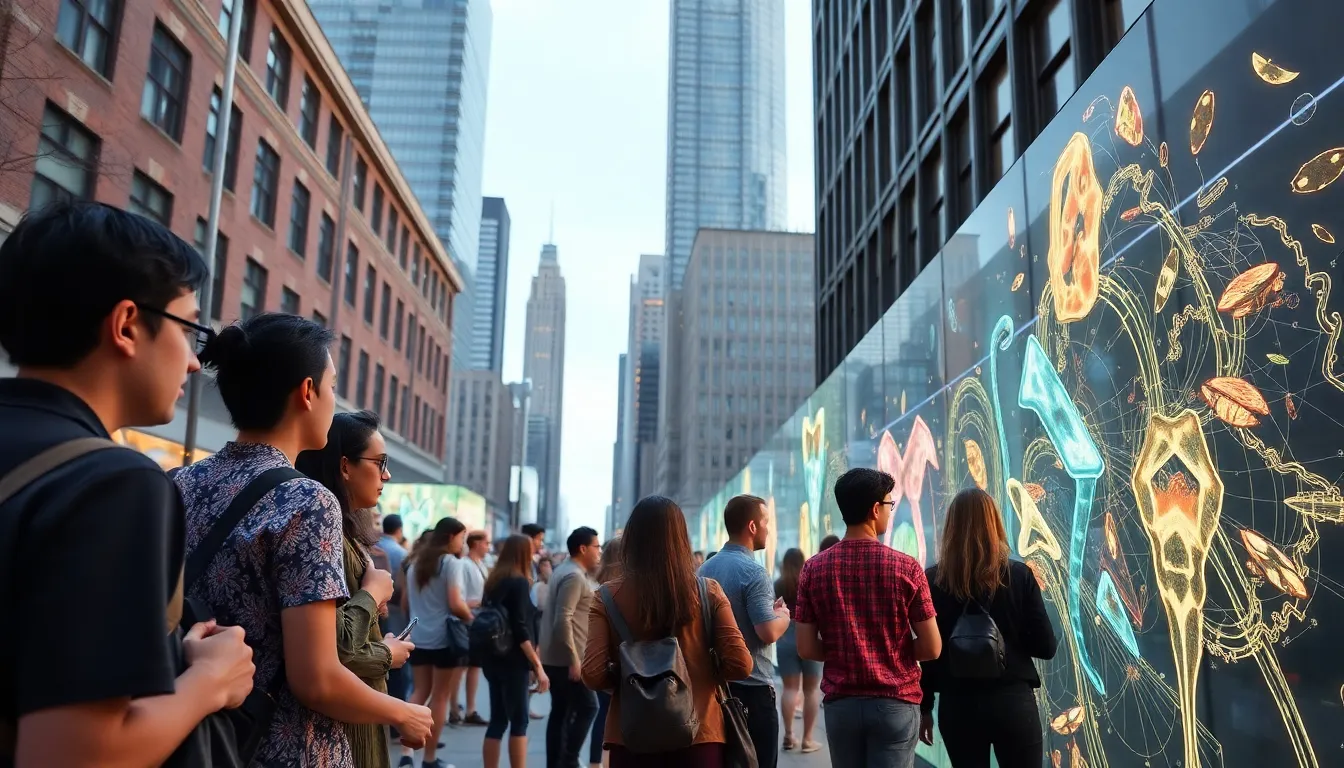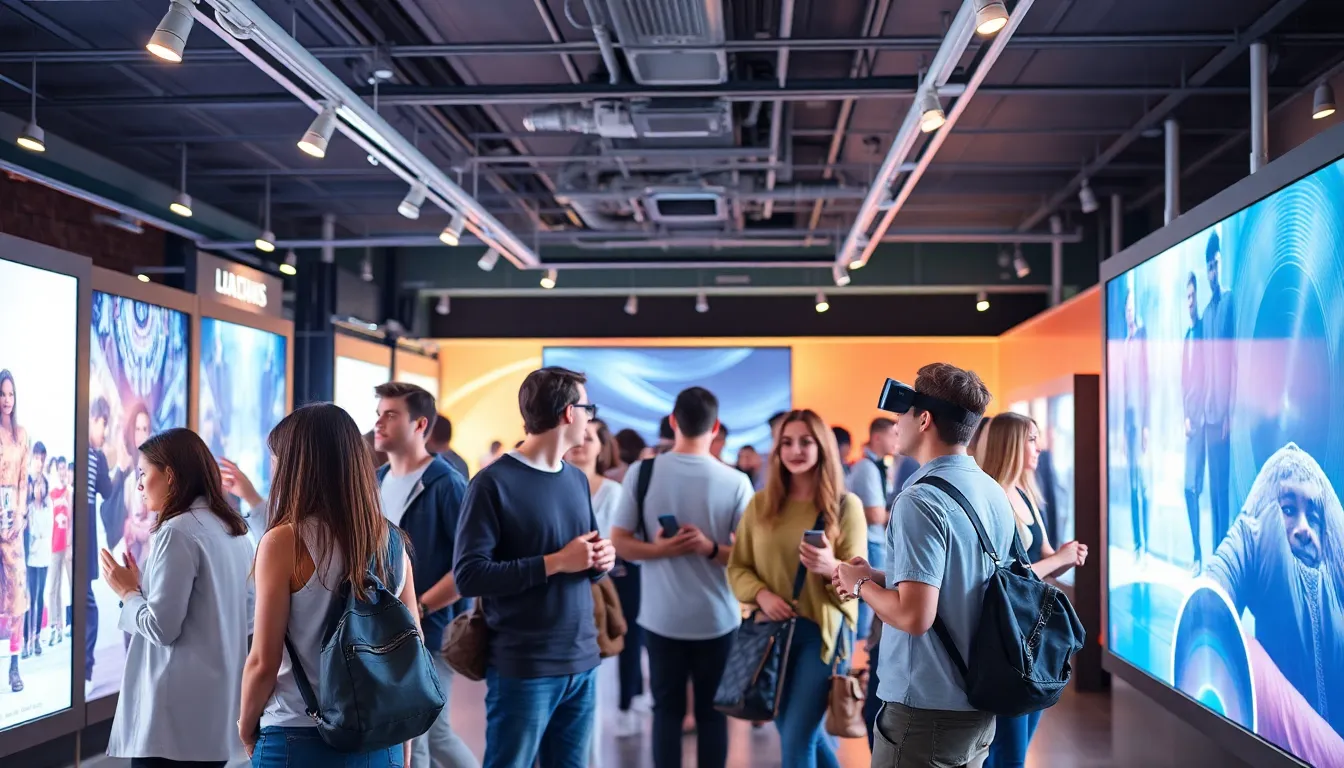In a world where consumers crave meaningful connections, experiential design has emerged as a powerful tool to engage and inspire. This innovative approach goes beyond traditional design principles, focusing on creating immersive experiences that resonate with people on a deeper level. Whether it’s in retail, events, or digital spaces, experiential design transforms environments into memorable journeys.
By blending aesthetics with functionality, it captivates audiences and fosters emotional connections. Companies that harness the power of experiential design not only enhance customer satisfaction but also build brand loyalty. As the demand for unique experiences continues to grow, understanding the principles of experiential design becomes essential for anyone looking to stand out in a crowded marketplace.
Table of Contents
ToggleWhat Is Experiential Design?
Experiential design focuses on creating immersive atmospheres that foster emotional connections between consumers and brands. This approach integrates various elements, including aesthetics, technology, and human interactions, to enhance the overall experience.
Definition and Scope
Experiential design involves the planning and creation of environments that engage users on multiple sensory levels. It spans various sectors such as retail, exhibitions, and digital interfaces, emphasizing user experience (UX) and space optimization. Practitioners utilize design strategies that promote interaction and draw individuals into the narrative of the space. Examples include pop-up shops that engage customers through interactive displays and museums that utilize augmented reality to deepen understanding.
Importance in Today’s Market
Experiential design plays a critical role in engaging consumers who seek authentic experiences. In a crowded marketplace, brands that prioritize experiential design distinguish themselves by forging emotional connections. Research shows that 70% of consumers prefer unique shopping experiences over product features. Companies embracing this approach witness enhanced customer satisfaction and loyalty, often achieving higher retention rates. In today’s market, effective experiential design translates to increased foot traffic, online engagement, and ultimately, revenue growth.
Key Principles of Experiential Design

Experiential design revolves around specific principles that enhance user interactions and emotional connections. Two of the most crucial principles include a user-centered approach and emotional engagement.
User-Centered Approach
User-centered design prioritizes the needs and preferences of the audience. By understanding target demographics, designers tailor environments to meet expectations. This approach involves conducting thorough research on user behaviors and preferences. Gathering feedback through surveys, interviews, and usability testing helps refine designs. The goal is to create intuitive experiences that foster seamless interactions, catering to the users’ desires and enhancing overall satisfaction.
Emotional Engagement
Emotional engagement captures the essence of experiential design. It encourages brands to forge deep connections with their audience. Designers employ storytelling techniques, immersive visuals, and sensory stimuli to evoke emotions. Creating memorable moments encourages consumers to develop a personal attachment to the brand. When consumers relate to a brand emotionally, they exhibit increased loyalty and advocacy. Fostering these connections is essential for achieving long-term success in competitive markets.
Applications of Experiential Design
Experiential design finds extensive applications across various sectors, enhancing engagement through immersive experiences. Key areas include retail environments, digital experiences, and event planning.
Retail Environments
Experiential design transforms retail spaces into engaging destinations. Designers create visually appealing layouts and interactive displays that encourage customers to explore products. Popular strategies include thematic displays, sensory elements, and personalization techniques. For instance, retailers utilize augmented reality mirrors to enhance the shopping experience by allowing customers to visualize products in real-time. Studies show that immersive retail environments increase customer dwell time, leading to higher sales conversions.
Digital Experiences
Experiential design significantly impacts digital platforms, where user engagement hinges on innovative interactions. Websites and applications employ gamification, interactive storytelling, and responsive design to captivate users. Successful examples include brands creating immersive video content that allows users to choose their narrative paths. Research indicates that interactive digital experiences yield higher retention rates and enhance brand loyalty, as users develop stronger emotional connections with the content.
Event Planning
Experiential design elevates events by crafting memorable experiences that resonate with attendees. Event planners create immersive installations that engage multiple senses, fostering authentic connections. Engaging elements such as interactive kiosks, live performances, and themed environments enhance attendee participation. A notable example includes conferences that incorporate virtual reality experiences to illustrate complex topics effectively. Data confirms that well-designed events can lead to increased attendee satisfaction and positive word-of-mouth, extending the event’s impact beyond its duration.
Challenges in Experiential Design
Experiential design faces various challenges that can impact its effectiveness. Addressing these obstacles is crucial for creating impactful experiences that resonate with users.
Balancing Innovation and Functionality
Balancing innovation with functionality remains a significant challenge in experiential design. Designers strive to introduce cutting-edge technologies and unique concepts while ensuring usability and practicality. Considering user accessibility can enhance interactions without overwhelming participants, fostering a seamless experience. For instance, incorporating interactive screens may attract attention, yet it’s vital that these interfaces remain straightforward enough for users of all ages. Successful experiential design integrates innovative elements that contribute to overall objectives, ensuring the design remains intuitive and purpose-driven.
Budget Constraints
Budget constraints present additional hurdles in experiential design. Creating immersive environments requires significant investments in resources, materials, and technologies. Limited budgets can restrict access to high-quality components or advanced technologies, potentially compromising the overall effectiveness of the experience. Designers often navigate this issue by prioritizing essential elements that maximize impact while remaining within financial limits. Implementing cost-effective solutions, such as repurposing existing materials or utilizing virtual environments, helps achieve engaging experiences without exceeding budgetary constraints. By strategically allocating resources, businesses can still create meaningful interactions that resonate with their target audiences.
Future Trends in Experiential Design
Emerging trends in experiential design reflect the evolving needs and interests of consumers. Technological advancements and sustainability are critical factors shaping the future landscape of this design approach.
Technological Advances
Technological advances enhance the immersive nature of experiential design. Innovations like virtual reality (VR), augmented reality (AR), and artificial intelligence (AI) create unprecedented user experiences.
- Virtual Reality: Fully immersive environments allow users to engage in unique settings that transport them from their physical location.
- Augmented Reality: Interactive elements overlay digital content onto the real world, making brand interactions more engaging through applications in retail, events, and digital platforms.
- Artificial Intelligence: AI enables personalized experiences by analyzing consumer behavior and preferences. Chatbots and recommendation systems provide tailored interactions that increase user satisfaction.
These technologies transform consumer engagement, encouraging brands to adopt innovative approaches to create memorable experiences.
Sustainability Considerations
Sustainability considerations play an essential role in shaping the future of experiential design. Consumers increasingly prioritize eco-friendly practices, prompting designers to integrate sustainable principles into their projects.
- Eco-Friendly Materials: Designers utilize sustainable materials that reduce environmental impacts, such as recycled plastics or responsibly sourced wood, creating spaces that reflect societal values.
- Energy Efficiency: Integrating energy-efficient systems promotes lower operational costs while reducing carbon footprints. Brands are adopting smart technologies that optimize energy use.
- Waste Reduction: Sustainable designs focus on minimizing waste during production and event execution. Utilizing modular designs means reusing components, cutting down waste and costs.
By embracing sustainability, brands position themselves as responsible entities, resonating with environmentally conscious consumers and enhancing their market appeal.
Experiential design is reshaping how brands connect with consumers by creating memorable and immersive experiences. As businesses strive to stand out in a crowded marketplace they must embrace the principles of this innovative approach. Prioritizing user engagement and emotional connections can lead to lasting loyalty and increased satisfaction.
With the rise of technology and a growing emphasis on sustainability brands that effectively integrate these elements into their experiential design strategies will likely thrive. By understanding and implementing these trends companies can foster deeper relationships with their audience and ultimately drive success in their respective industries.

